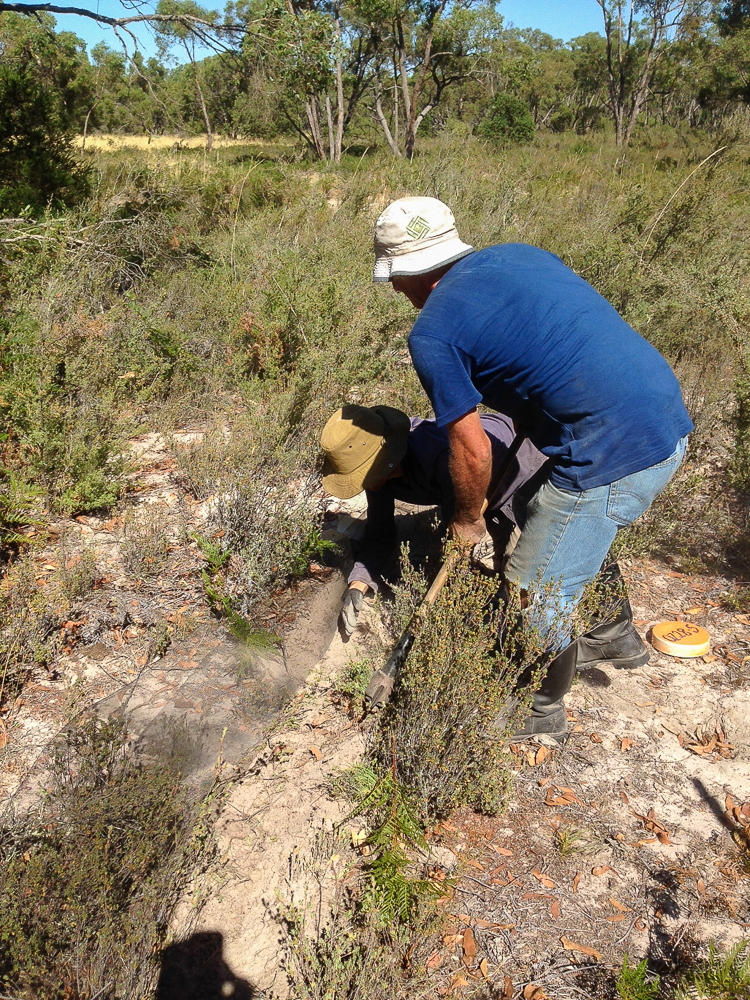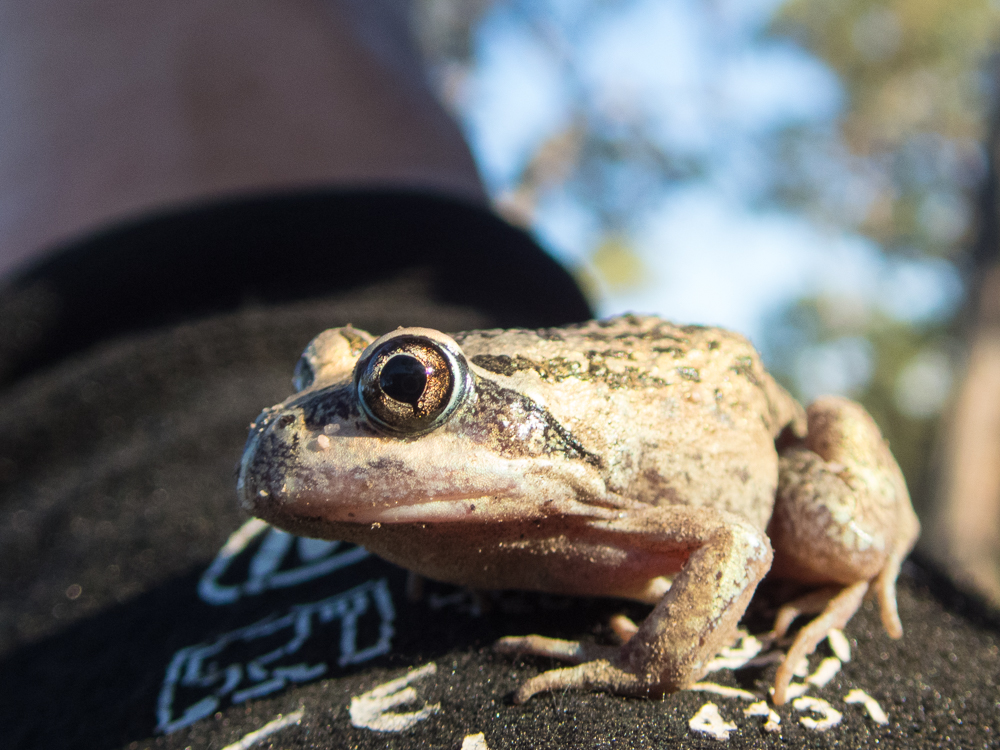Fauna surveys in the Wimmera off to a flying start
At the beginning of March, a hardy bunch of NGT staff loaded the utes with trapping equipment, spades and picks, eskies and unheard of quantities of oats and peanut butter (for bait, of course!) and made our way up to the Wimmera to conduct a week of fauna monitoring. The trip involved installing a series of pitfall lines and Elliott traps at two Greening Australia-managed conservation properties just south of the Little Desert National Park, followed by 4 nights of monitoring.
The hot sun had the sweat pouring as we set up pitfall line after pitfall line. However, the heat of the days promised warm overnight temperatures and gave us a great chance at finding some elusive nocturnal creatures.
Morning checks of the Elliotts (folding aluminium traps) revealed yellow-footed antechinus and many, many house mice at both properties, before traps were closed during the heat of the day. Cold-blooded species found in the pitfalls included reptiles such as marbled gecko, jacky lizard, Bougainville’s skink, painted dragon, bearded dragon and common dwarf skink, amongst others.
Curiously (given the conditions), the pitfalls regularly turned up frogs even in dry, sandy, desert stringybark (Eucalyptus arenacea) habitat. Species included spotted marsh frog, painted burrowing frog and banjo frog, and wet sponges and plastic shelters in the pitfalls kept them in good spirits until they were released at daybreak.
The trapping has helped to further build the picture of the fauna living in these valuable refuges, and a huge thanks goes to the team for the big effort: Sheryl, Andy, Lachie, Mirinda, Gavin, Rose and Bryan; as well as Greening Australia for allowing us to get involved at these unique reserves.



